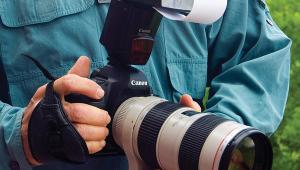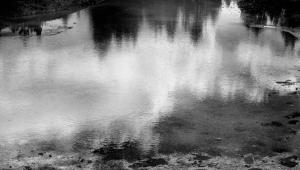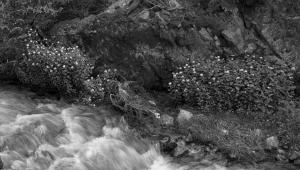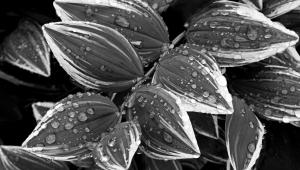Pictures Unsharp?: Here are 10 Tips For Improving Results
What follows is a list of 10 reasons why your images may not be as sharp as you want and how to fix the problem. Some factors are out of your control, of course, but most of the time you can address the issue that is causing the problem.
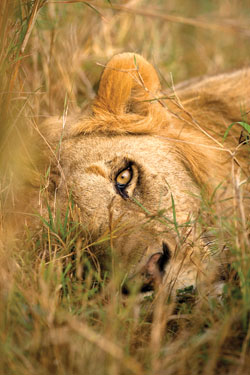

All Photos © Jim Zuckerman
1. Image Stabilization was left on when you used a tripod. The IS (Canon) or VR (Nikon) feature on your camera or lens is designed to be used when handholding the camera. When your gear is mounted on a tripod, it should be turned off. There are some lenses that are said to be unaffected by this issue, and they produce sharp pictures whether the stabilization feature is left on or turned off. In my experience, I have never had sharp pictures when the IS function is turned on and I’m using a tripod. This is also true when I’m shooting on safari and my support is a beanbag. I lost some great shots of lion cubs nestled in a gnarled tree because I assumed the beanbag would be similar to handholding the camera. I was wrong. My images were unsharp until I turned the IS off.

2. The center column of the tripod is raised too high. The stability of a tripod comes from the fact that three legs are used to provide a firm support. When you raise the center column 12 or 14” above the base, it doesn’t have the same rigidity, and if there is any wind or if you jar the camera when pushing the shutter button, the resulting pictures will be blurred.
3. Your shutter speed was too slow and you are handholding the camera. This is one of the prime culprits. If the shutter speed is slower than 1/60th of a second, chances are that your images will not be tack sharp. This guideline is useful for lenses in the 50mm range and wider. For telephoto lenses, the general rule is that the shutter speed should be the reciprocal of the focal length of the lens. In other words, if the telephoto is a 300mm, then the shutter speed should be 1/300th of a second or faster. If the lens is a 500mm plus a 1.4x teleconverter equaling 700mm of focal length, the shutter speed should be at least 1/700th of a second to ensure sharp pictures.
When you are shooting in a low-light situation, the strategy you should use is to raise the ISO until the shutter speed becomes fast enough to give you tack sharp images. This is assuming you are already using a large lens aperture.
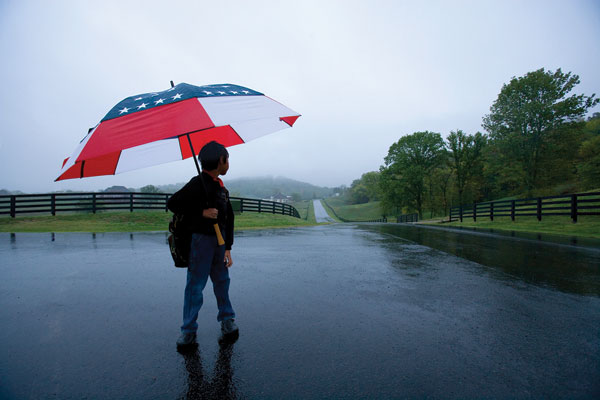
4. Don’t handhold your camera when photographing at twilight or night. This will always result in unsharp pictures. If you raise the ISO so high to get a fast shutter speed, the pictures will be full of noise. Digital noise is quite pronounced in pictures taken in low light, so make sure you use a tripod, a low ISO, and then the long shutter speeds won’t be that much of an issue.
5. Autofocus can fail in low light environments. In order for the autofocus mechanism to function correctly, it needs contrast—the difference in light areas of the composition versus dark areas, or the difference between colors. When shooting at night or in a dim interior such as a restaurant or cathedral, for example, I recommend turning the autofocus off and focus the old fashioned way … manually. This will guarantee that your pictures will be sharp.
6. When there are several planes of focus, the autofocus mechanism can be fooled. A lion in tall grass, for example presents a challenging proposition for the autofocus feature. It can’t know what the subject is, and most likely it will focus on one of the blades of grass and leave the animal out of focus. Therefore, the only solution is to focus manually. That takes all the guesswork out of the equation.

7. Doing macro photography without a tripod is like shooting yourself in the foot. Neither of these are good ideas. When you move in close and fill the frame with small subjects, you lose depth of field. What most photographers do is close the lens down to a small aperture to compensate for that loss. When you gain increased depth of field light is lost and therefore a long shutter speed is needed to compensate. If you try handholding the camera for macro work, you will very quickly see that it is an exercise in frustration because the pictures will almost never be sharp. Therefore, a tripod is the only way to get sharp macro pictures.
8. Doing macro photography in the wind guarantees blurred pictures. If you insist on doing macro photography when it’s windy you increase the chance that your pictures will be unsharp. Even the slightest breeze makes macro work virtually impossible. If you are shooting rock patterns or bark, for example, you won’t have any problems (unless the wind is strong enough to buffet the camera). However, if you are trying to photograph flowers, leaves, grasses, butterflies, spider webs, seed pods and other subjects that are at the wind’s mercy, then I would encourage you to wait until the wind has died down.

9. If you don’t use good macro photography technique, more than likely your images will be less than sharp. For example, use the mirror lockup feature to minimize vibration in the camera. Even the subtlest vibration can cause images to be less than sharp when using significant magnification. Every time you take a picture, the mirror in back of the lens flips up to allow the light coming through the lens to strike the digital sensor. After the exposure is complete, the mirror flips back down again. This action causes vibration, and when you lock it up out of the way, it doesn’t move again until the photograph is taken. Then, after the image is made, the mirror returns to its original position.
Next, use either the self-timer built into the camera or a wireless trigger to take the picture. I use the 2-second option and it works fine. This prevents the camera from being jarred when your finger depresses the shutter button.
Finally, make sure your tripod is tight. Nothing should be loose; all the sections should be firmly tightened, and the ball or other supporting head must be fastened tightly onto the tripod itself.

10. Many lenses don’t focus correctly at infinity. When you manually turn a lens (and particularly a telephoto lens) all the way to the infinity mark, it is reasonable to expect that this means the lens will be focused on subjects at great distances such as the moon, a distant mountain range, clouds, etc. This is often not true. Sometimes you have to pull the focus ring back slightly to get a sharp picture. The autofocus mechanism should accommodate this discrepancy, but if you are focusing manually it’s important to be aware of this. Focus by your eye instead.

